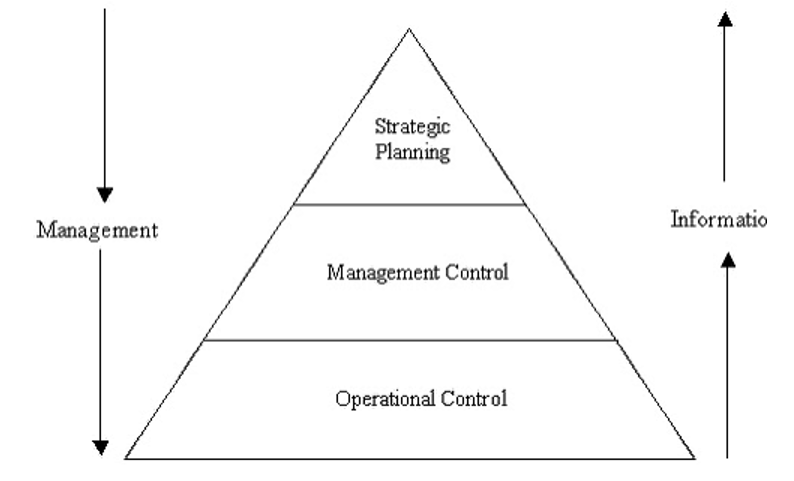Home »
Management Information System
Hierarchy of Management Activity in MIS (Management Information System)
Management activity describes the levels of management activities. In this tutorial, we will learn about the hierarchy architecture of management activities.
By IncludeHelp Last updated : June 01, 2023
There are three levels of management activities,
- Strategic planning
- Management control
- Operational control
Hierarchy is the process of ensuring that specific tasks are carried out effectively and efficiently. Management control is the process by which managers ensure that the resources are obtained and used effectively and efficiently to achieve the organizational goals.
Strategic planning is the method of deciding the organization's objectives, the improvements needed to achieve those goals, the tools used to attain those goals, and the policies used to obtain, manage and distribute those resources.
These levels of management activities are described in detail as follows...
1) Strategic planning
Strategic management is the comprehensive collection of ongoing procedures and processes used by organizations throughout an enterprise to consistently organize and align resources and actions with mission, vision, and strategy. Strategic management activities turn the static plan into a system that provides decision-making input on strategic success.
The strategy consists of making choices on the part of managers to achieve corporate goals between alternative action plans, dedication to specific product markets, strategic steps and business strategies. Strategic planning is required from top to bottom levels for management of all levels.
2) Management control
At middle management, the people perform resource control practices. Management regulation enables the organization's smooth organizational activities. Management control facilitates smooth operational activities in the organization. Management control describes how an organization's actions of individuals or groups are constrained to perform certain actions while avoiding other actions to achieve organizational objectives. Control of management falls into two broad categories— regulative and normative controls — but there are several types within those categories.
It is essential for management to keep a check on the activities and people involved in operations to avoid any waste of resources and to more effectively use the resources. This includes making arrangements that are appropriate for managing the various activities needed for the organization's proper management. It includes the management of various projects that the organization is handling.
3) Operational control
Operational control systems are designed to ensure day-to-day actions are consistent with the plans and goals established. This focuses on recent period cases. Operational inspection systems are derived from management control system specifications.
At low-level management, the operational control tasks are done by the staff. Operational control helps to make use of available resources without any wastage. This requires proper computer management with reduced costs and amortization. It also helps manage the workers involved in activities by the proper direction of supervision. It helps the organization, in a desirable time, to produce quality products. This involves conducting routine processes, such as updating and managing user inquiries that belong to the operational control stage below.

Hierarchy of Management Activities
MIS is an important part of an organization as it helps to collect planning and decision-making information. It also helps in carrying out other organizational tasks such as recruiting, managing, and regulating. In an organization, MIS performs various functions such as collecting and processing data to get accurate information for decision making. It also helps in storing information and retrieving it as and when required.